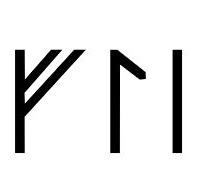
Viking Names
Ulfljot
The Old Norse female personal name Úlfljót is comprised of the element Úlf– ‘wolf’ and the element -ljót which is also attested as the simplex female personal name Ljót. Although Úlfljót is not otherwise attested, the masculine equivalent Úlfljótr is recorded in Iceland and possibly Yorkshire. John Hines has suggested that the female name is inscribed in runes on the Saltfleetby spindle whorl found at Saltfleetby St Clement, Lincolnshire, which he has translated as ‘Óðinn and Heimdallr and Þalfa, they are helping you, Úlfljót…’.
Read More

Viking Names
Thorarna
Þórarna is a Old Norse compound name with the first element Þór-, from the name of the god Þórr ‘Thor’ (very common in both male and female names), combined with -arna, the feminine form of -arinn, either from arinn ‘hearth’ or more probably the postulated element *arin related to ǫrn ‘eagle’. A couple of instances of Þórarna are recorded in Norway with one of the earliest being from the ninth century. The name is frequent in Iceland evidenced by the multiple mentions in Landnámabók ‘The Book of Settlements’, a quasi-historical text which recounts the settlement of Iceland. Þórarna is not attested in Denmark or Sweden. There is a form of the name found in the Yorkshire Domesday, but it may alternatively represent the male name Þórormr.
Read More
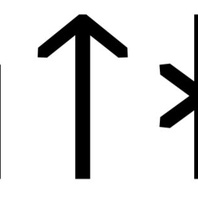
Viking Names
Frosthild
The postulated name Frosthildr may be an Anglo-Scandinavian formation as it is only attested in the minor place-name of Throstle Hill, West Yorkshire. It is an Old Norse compound formed from Frost- ‘frost’ and -hildr ‘battle’.
Read More

Viking Names
Hjalp
Hjalp was recorded in West Scandinavia by the time of the settlement of Iceland (c. 870-930) and is found in a Swedish place-name. The name was originally a byname from Old Norse hjǫlp ‘help’. It is also the first element of the place-name Helperby, North Yorkshire. In the twelfth century, one of Earl Rǫgnvaldr of Orkney’s ships was called Hjalp, an early example of giving ships female names.
Read More
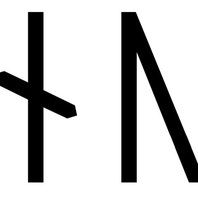
Viking Names
Gunnvor
Gunnvǫr is a common name throughout the Norse world. It is very frequent in Norway and Denmark where it is also found in place-names and in Sweden it is found in several runic inscriptions. In Landnámabók ‘The Book of Settlements’, a Gunnvǫr is the daughter of one of the settlers of Iceland. Additionally, it is found in early Lincolnshire documents (c. 1200) and occurs in Domesday book for Yorkshire. The name also occurs in an inscription on an eleventh-century sundial in St Bartholomew’s Church, Aldbrough, East Yorkshire, together with the male name Ulf. The second wife of Richard I is referred to as Gonnor/Gunnor/Gunwera in Norman sources and there are other bearers of the name in Normandy. Gunnvǫr is a Old Norse compound name formed from Gunn- from gunnr, guðr ‘battle’ and –vǫr, the feminine form corresponding to -varr which is either derived from the adjective varr ‘aware’ or the noun *warjaʀ ‘protector’.
Read More
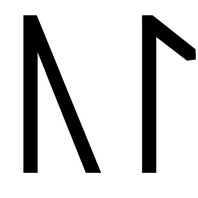
Viking Names
Gulla
Gulla is recorded in several runic inscriptions in Sweden. There is one attestation of Gulla in the form of Golle in a medieval Lincolnshire document (c. 1218-1219). It is a short form of Old Norse names in Guðl-.
Read More

Viking Names
Hild
Hildr is a monothematic name derived from Old Norse hildr ‘battle’, and in Old Norse mythology it was the name of a valkyrie. It is common across Scandinavia and also a common second element in a number of female personal names such as the very common Gunnhildr, Ragnhildr, etc. The name is attested as the first element in Hinderskelfe, North Yorkshire, and in Hinderwell, North Yorkshire. Hinderwell may originally have contained the name of the English St Hild of Streanæshalch (Whitby), but preserved forms of the place-name show Scandinavian grammar in the use of the genitive singular Hildar. This form is also seen in a lost field-name in Brocklesby, Lincolnshire.
Read More
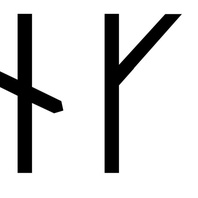
Viking Names
Inga
Inga is very common in Denmark and Sweden (where it appears in a number of runic inscriptions) and probably spread from these two areas into Norway in the thirteenth century. where the name remained popular thereafter; however, it is also possible that Inga developed independently in Norway. In the Danelaw, Inga appears in medieval documents from Lincolnshire as early as c. 1160. The name is a short form of Old Norse female names in Ing(i)-, which is of doubtful origin but perhaps related to a Greek word meaning ‘lance, staff’.
Read More
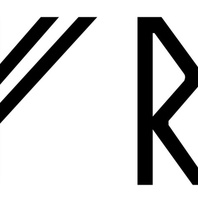
Viking Names
Alfrun
Alfrún was recorded in West Scandinavia (Norway and Iceland) as a mythological name. It is an Old Norse compound formed from the elements Alf- ‘elf’ and –rún ‘confidante’. It has been suggested that when used in a personal name it has the sense of ‘secret, wisdom’, associated with rúnar ‘runes’. There may be one attestation of Alfrún in a medieval church document from Lincolnshire. However, the form may alternatively represent the Old English female personal name, Ælfrūn.
Read More
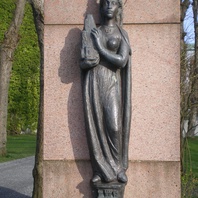
Viking Names
Sunnifa
Sunnifa is a Scandinavianised form of Old English Sunngifu, which was the name of an Irish Christian queen who fled to Norway in the tenth century, according to her legend. She was later venerated as a saint and is the patron saint of Bergen and Western Norway. The name appears in Norway from the eleventh century onwards, but it is rare in Iceland and Denmark. Sunnifa is well-attested in medieval English documents notably in Lincolnshire and Yorkshire, as well as some field-names in West Yorkshire.
Read More

Viking Names
Hunhild
Húnhildr is a postulated Old Norse female name of possible Anglo-Scandinavian origin. The first element of the name is Hún- of doubtful origin either from Old Norse húnn ‘bear-cub’ or perhaps Primitive Scandinavian hūn ‘high’. The second element of the name is –hildr ‘battle’. The name appears to be the first element in the field-name Hunildehus in Wildmore, Lincolnshire, which was recorded c. 1200.
